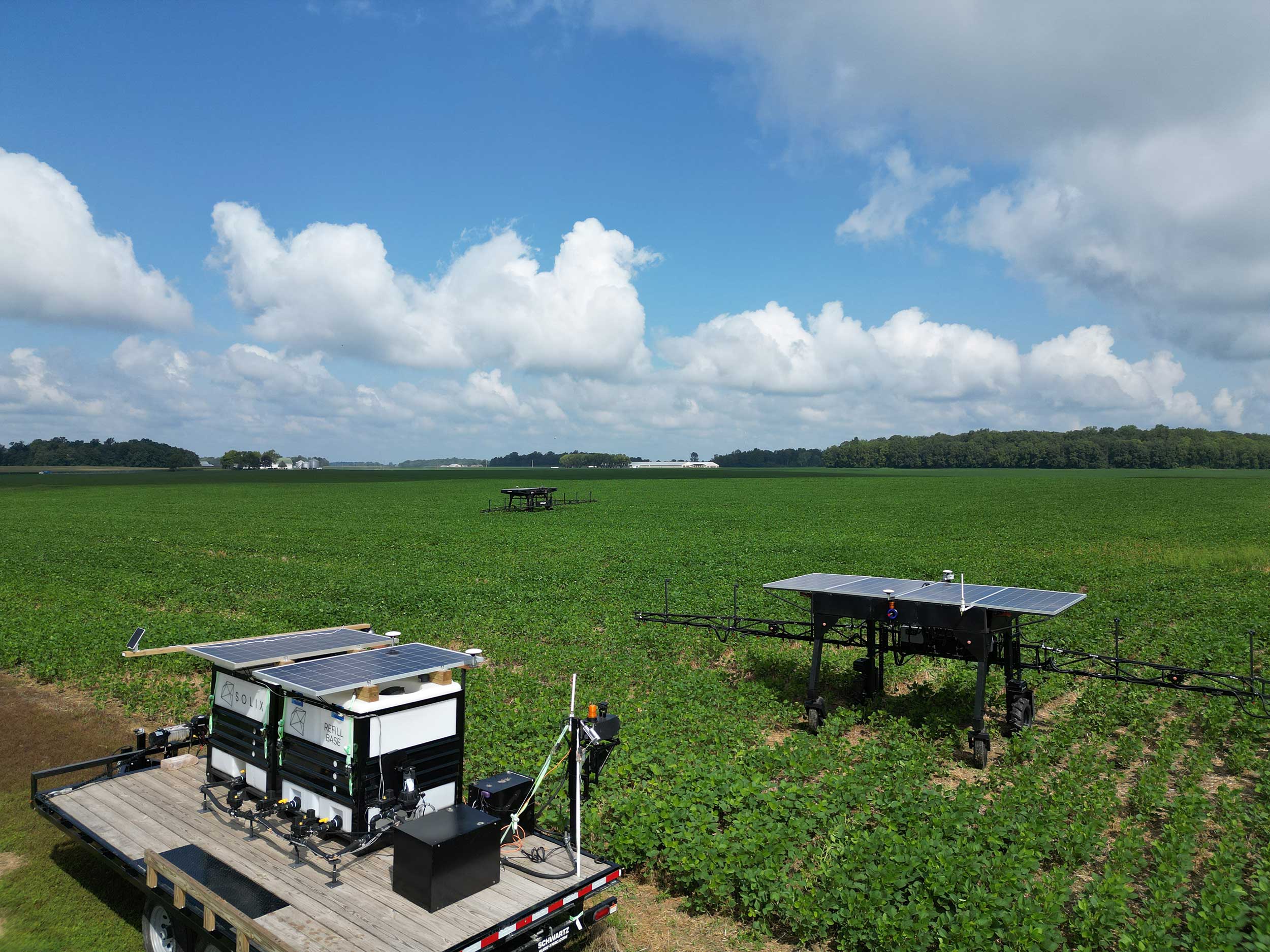A new docking station by artificial-intelligence innovator Solinftec will provide autonomous filling for the Solix Ag Robot, allowing its to operate 100 percent autonomously throughout the season. The new technology has been unveiled at the 2024 Farm Progress Show going on this week in Boone, Iowa, and the company is validating its final features and concepts as it closes in on production.
Indiana-based Solinftec has had a Scouting Robot for a couple of years, and its Solix Sprayer Robot, which can detect and spray weeds, became commercially available in early 2024. The sprayer is built to provide complete agronomic field analysis, improve early-stage weed control, reduce herbicide applications by as much as 95 percent, limit soil compaction and carbon footprint, and potentially increase field productivity.
“Each field has unique characteristics that allow for different weeds to appear in the field, depending on the stage of the crop,” said Guilherme Guiné, Chief Operating Officer for Solinftec North America. “We designed the docking station to allow Solix to choose the product that will be used based on the recognition of weeds by our artificial intelligence system, ALICE AI, enabling the use of specific products for each unique situation.”

The docking station is autonomous, solar-powered, and integrated with the Solix platform. This new technology enables continuous field management by ensuring the robot has access to the necessary products for 24/7 operations. The station also incorporates scouting data obtained throughout the growing season to ensure the right products are available for day-to-day executions.
We plan to equip the station with several products and allow the robot to apply the test concept in the field,” Guiné said. “Solix has the ability to use a small amount of product in a section of the field and check the crop’s response. Solix can then monitor that area and broaden the scope of application based on results. With this, we will be able to increase the speed of adoption of new products on a large scale, considering the diversity of each field, region and season.”
The docking station and Solix will also identify areas with similar characteristics and focus on the most promising results to increase productivity. This concept can be applied to biological products, chemicals, fertilizers and any new product that can bring productivity gains. The docking station will also be able to flush the robot’s tanks autonomously and safely.


